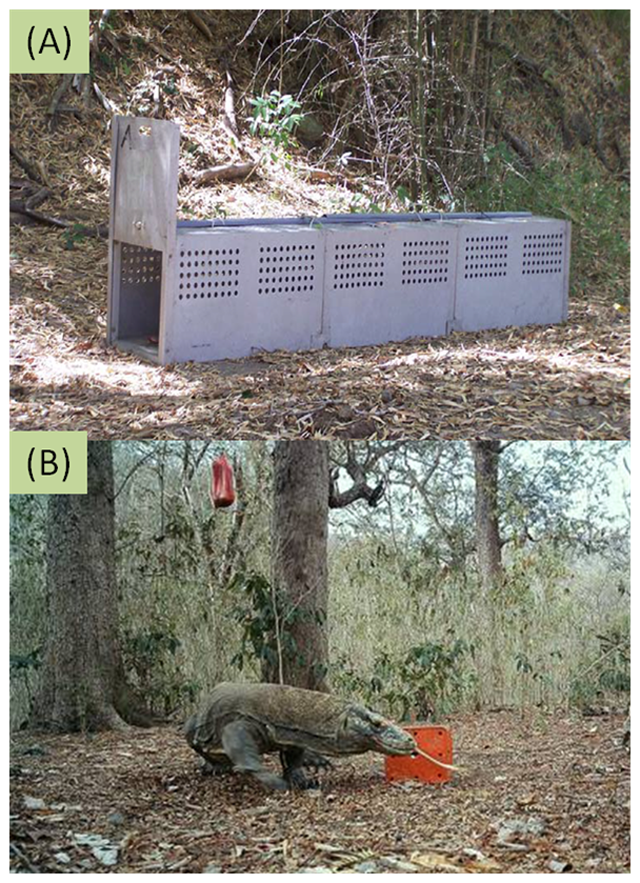
How to Count Komodo Dragons

How do you count Komodo dragons? With some cameras and the element of surprise.
Camera traps are frequently used to take pictures and monitor populations of large mammals like tigers and leopards, but until now, they haven't been used often to count Komodo dragons ― the world's largest lizards ― or other reptiles and amphibians.
Recent research suggests that they can and should be used to keep tabs on these animals, and that cameras may beat the physical traps currently used to monitor Komodo dragon populations.
Camera traps work by taking pictures when alerted to the presence of an animal by a motion detector, often an infrared one that detects heat. That's a potential problem for reptiles and amphibians, which are cold-blooded, and thus often have the same temperature as the surrounding environment.
But the study, published online last week in the journal PLOS ONE, found that cameras worked about as well as traps at detecting the presence of Komodo dragons ― and, in certain areas, did even better. Plus, they require much less manpower to operate, and are far less expensive. With cameras, there is also no need to set up a large trap, bait it with goat meat and free the animal afterward.
Filming dragons
The finding is significant, considering Komodo populations are threatened by human activities and that many lizards and amphibians are in decline around the world. Camera traps could help keep monitor these reptilian beasts elsewhere.
Get the world’s most fascinating discoveries delivered straight to your inbox.
The Komodo dragons' body temperatures were apparently warm enough to be detected by the camera, the study found (although the lizards are active during the daylight, when infrared sensors aren't always necessary). However, other lizards may not be recorded so easily, the study authors noted.
The study took place in eastern Indonesia, among the five islands where the predatory lizards live. Unlike most lizards, Komodo dragons are apex predators, and eat animals as large as water buffalo. They've achieved this position atop the food chain through their sheer size, toxic venom and sharp teeth. Plus, there is a lack of large mammals with which to compete.
The largest lizards
Adult male Komodo dragons can grow up to 10 feet (3 meters) long and weigh as much as 192 pounds (87 kilograms), according to the study. The animals attack and eat just about anything, including deer, goats, pigs, dogs and occasionally humans.
The lizards are currently considered vulnerable ― one step away from being endangered ― by the International Union for Conservation of Nature.
Komodo dragons are quite intimidating when feeding, ripping apart their prey quickly with their 60-some serrated teeth, according to the Smithsonian's National Zoo. Komodos can eat up to 80 percent of their body weight in one sitting. If they are threatened, however, they can quickly vomit much of their stomach contents and run away — their top speed is about 13 mph (20 km/h). Young dragons face difficult lives, as they are often eaten by adult Komodo dragons, providing the grown-ups with about 10 percent of their diet.
Email Douglas Mainor follow him @Douglas_Main. Follow us @OAPlanet, Facebook or Google+. Original article on LiveScience's OurAmazingPlanet.

